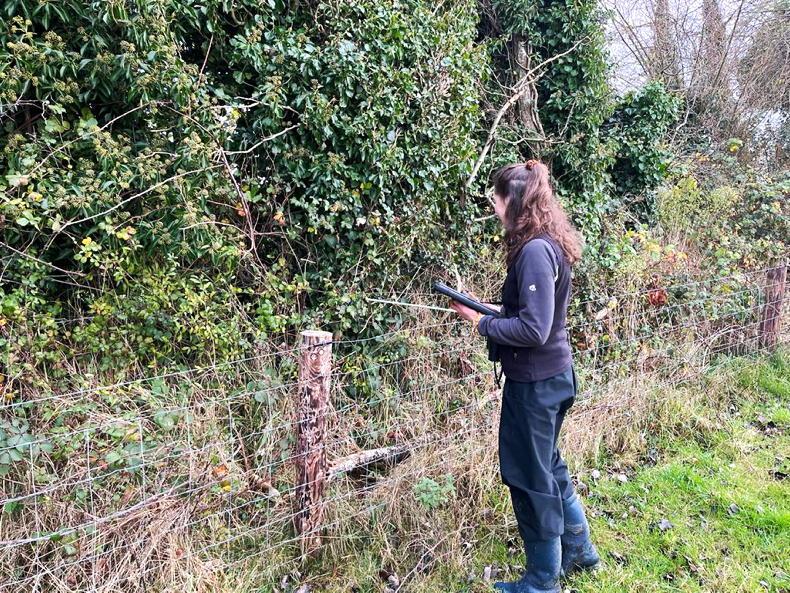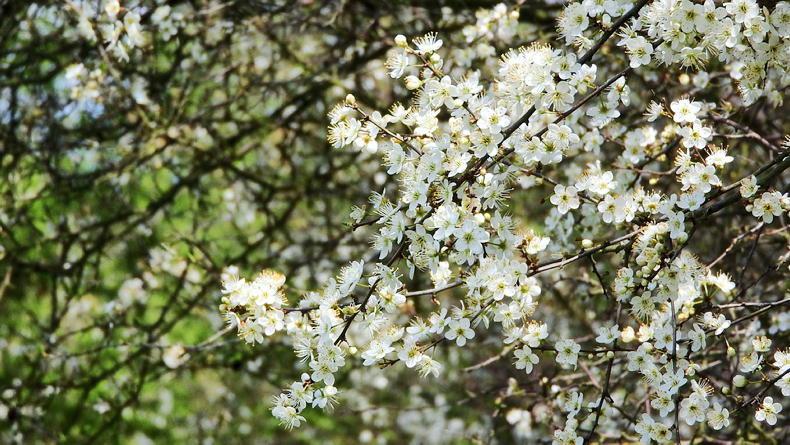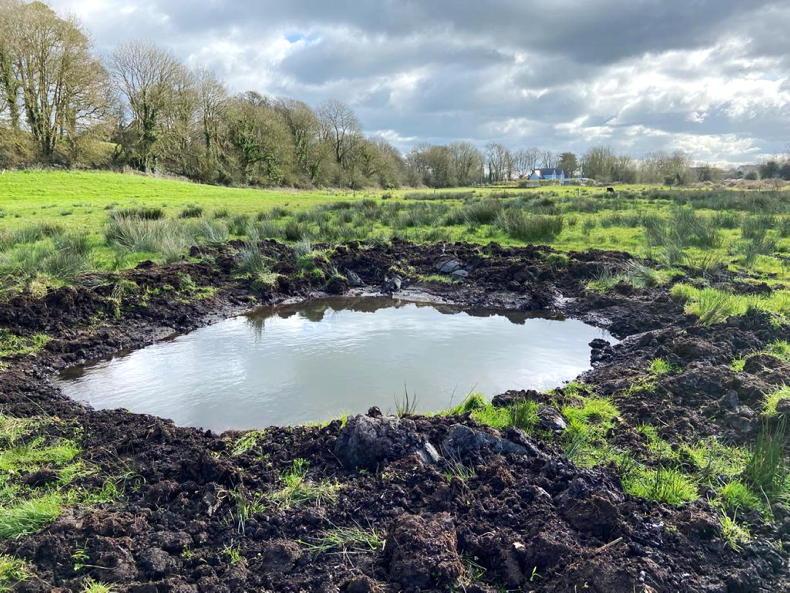Biodiversity scoring was carried out by the Biodiversity Regeneration in a Dairying Environment Project (BRIDE) for the Footprint Farmers Programme over the past few months.
Now all of the biodiversity feedback reports are back, we will take a look at the different habitats and scores observed across the various sectors.
There was huge variation across the farms, in both the habitats on-farm and the scores given.
Farm Biodiversity Index
There was huge variance in the Farmland Biodiversity Index (FBI) of the farms. Scores ranged from a 3C to 17B – the highest score across all the farms.
To break down the FBI score, the number is the Space For Nature (SFN) on the farm, while the letter signifies the quality of the habitat.
While there was a variation of scores observed across the farms, as a Farming With Nature (FWN) standard, 10B is the minimum target. This would be 10% SFN, with an average quality score of B.
Highest scoring sectors
Interestingly, no one sector scored higher than the other. Ciara Kinsella’s sheep farm in Co Wexford received a score of 28C, with 28% of the farm classified as SFN.
However, the quality score remained at a C due to narrow widths of field margins and a lack of species diversity in a newly planted hedge.
Kenneth Reid’s beef farm in Clarina, Co Limerick, scored well at 17B. This was due to the hedgerows surrounding the farm and species-rich wet grasslands. There was also a nice variety of mature trees across the farm to provide habitats for nesting birds and bats.
Pádraig Connery’s tillage enterprise in west Waterford also scored well, earning a score of 10B. This was due to some untopped hedgerows across the farm, as well as some agro-forestry areas and mixed woodlands.
It seemed to be the intensive dairy enterprises that scored lower, with scores of 8C and 6C seen here.
Common habitats across farms
Field margins and existing hedgerows were the most common habitats on the farms. However, these field margins tended to score poorly due to their width.
Ecologist Laura Hynes from the BRIDE Project, has advised farmers to increase their field margins to greater than 2m in order to improve their scores. Having wider field margins will provide a space for wildflowers to grow.

Ecologist, Laura Hynes, scoring hedgerows on Tullamore Farm. Note the ivy in this hedgerow, which is great for providing food for birds later in the season.
This will in turn support invertebrates, including pollinators, which will provide food for birds and small mammals.
Wider field margins will also provide a foraging habitat for barn owls and kestrels. And lastly, increasing field margins will also increase the SFN of the farm, helping farmers to reach the 10% target.
While existing hedgerows were also common across the farms, many scored poorly, as they had been topped; mature hedgerows that had been left untopped scored higher. Allowing these hedgerows to grow untopped, with only side trimming where needed, gives the hedge a chance to flower every year and provide fruit.
Allowing ivy to grow in the hedgerow is also beneficial, as it will provide flowers later in the season when not much else will be flowering. This will help the birds over winter.
Some farms had put new hedgerows in place in recent years, however, much of these received lower scores due to a lack of species diversity.
Going forward, it is recommended to include more native Irish species in the hedgerows, such as whitethorn, blackthorn, guelder rose, holly and hazel.

Blackthorn is a prominent feature of Irish hedgerows.
Riparian buffer strips were also put in place across several farms, but again, these scored poorly – with scores as low as E observed – due to the narrow widths of the buffers.
Laura advised farmers to increase the width of the buffers to greater than 2m in order to increase their scores, along with their SFN percentage.
There were patches of mixed and native woodland across many of the farms and these scored well, receiving scores of A and B across the farms.
This was mainly down to the diversity of species present and the amount of native Irish species seen, such as oak, ash and hazel.
Recommendations
One of the key recommendations for all farmers was the addition of a farm pond.
This is a permanent habitat, which will support invertebrates, such as dragonflies and damselflies, and birds and mammals.
Kenneth and Martin have already put in farm ponds, and Ciara has identified a suitable area on her farm for one.

Kenneth has already dug a pond on his farm.
Biodiversity scoring was carried out by the Biodiversity Regeneration in a Dairying Environment Project (BRIDE) for the Footprint Farmers Programme over the past few months.
Now all of the biodiversity feedback reports are back, we will take a look at the different habitats and scores observed across the various sectors.
There was huge variation across the farms, in both the habitats on-farm and the scores given.
Farm Biodiversity Index
There was huge variance in the Farmland Biodiversity Index (FBI) of the farms. Scores ranged from a 3C to 17B – the highest score across all the farms.
To break down the FBI score, the number is the Space For Nature (SFN) on the farm, while the letter signifies the quality of the habitat.
While there was a variation of scores observed across the farms, as a Farming With Nature (FWN) standard, 10B is the minimum target. This would be 10% SFN, with an average quality score of B.
Highest scoring sectors
Interestingly, no one sector scored higher than the other. Ciara Kinsella’s sheep farm in Co Wexford received a score of 28C, with 28% of the farm classified as SFN.
However, the quality score remained at a C due to narrow widths of field margins and a lack of species diversity in a newly planted hedge.
Kenneth Reid’s beef farm in Clarina, Co Limerick, scored well at 17B. This was due to the hedgerows surrounding the farm and species-rich wet grasslands. There was also a nice variety of mature trees across the farm to provide habitats for nesting birds and bats.
Pádraig Connery’s tillage enterprise in west Waterford also scored well, earning a score of 10B. This was due to some untopped hedgerows across the farm, as well as some agro-forestry areas and mixed woodlands.
It seemed to be the intensive dairy enterprises that scored lower, with scores of 8C and 6C seen here.
Common habitats across farms
Field margins and existing hedgerows were the most common habitats on the farms. However, these field margins tended to score poorly due to their width.
Ecologist Laura Hynes from the BRIDE Project, has advised farmers to increase their field margins to greater than 2m in order to improve their scores. Having wider field margins will provide a space for wildflowers to grow.

Ecologist, Laura Hynes, scoring hedgerows on Tullamore Farm. Note the ivy in this hedgerow, which is great for providing food for birds later in the season.
This will in turn support invertebrates, including pollinators, which will provide food for birds and small mammals.
Wider field margins will also provide a foraging habitat for barn owls and kestrels. And lastly, increasing field margins will also increase the SFN of the farm, helping farmers to reach the 10% target.
While existing hedgerows were also common across the farms, many scored poorly, as they had been topped; mature hedgerows that had been left untopped scored higher. Allowing these hedgerows to grow untopped, with only side trimming where needed, gives the hedge a chance to flower every year and provide fruit.
Allowing ivy to grow in the hedgerow is also beneficial, as it will provide flowers later in the season when not much else will be flowering. This will help the birds over winter.
Some farms had put new hedgerows in place in recent years, however, much of these received lower scores due to a lack of species diversity.
Going forward, it is recommended to include more native Irish species in the hedgerows, such as whitethorn, blackthorn, guelder rose, holly and hazel.

Blackthorn is a prominent feature of Irish hedgerows.
Riparian buffer strips were also put in place across several farms, but again, these scored poorly – with scores as low as E observed – due to the narrow widths of the buffers.
Laura advised farmers to increase the width of the buffers to greater than 2m in order to increase their scores, along with their SFN percentage.
There were patches of mixed and native woodland across many of the farms and these scored well, receiving scores of A and B across the farms.
This was mainly down to the diversity of species present and the amount of native Irish species seen, such as oak, ash and hazel.
Recommendations
One of the key recommendations for all farmers was the addition of a farm pond.
This is a permanent habitat, which will support invertebrates, such as dragonflies and damselflies, and birds and mammals.
Kenneth and Martin have already put in farm ponds, and Ciara has identified a suitable area on her farm for one.

Kenneth has already dug a pond on his farm.









 This is a subscriber-only article
This is a subscriber-only article











SHARING OPTIONS: